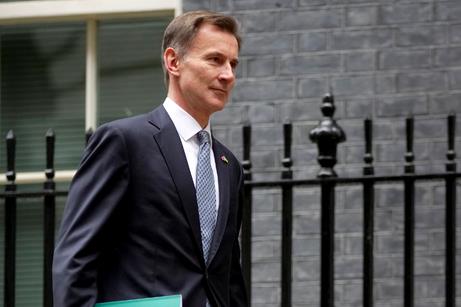
Mar 10, 2023 12:07:45 PM
Weekly Market Wrap 10/03/2023
Good news is bad news, bad news is bad news for equity markets at the moment. It’s been a heavy week for data, as the UK economy surprised to the upside, the EU surprised to the downside as we await key US jobs data released later today. Markets suffered across the board as short-term rate pressure intensified; longer term rates fell as recession risks increase, increasing the widely followed negative 2/10 spread, a key recession indicator.

UK Market
The UK market ended the week lower. The Office for National Statistics (ONS) confirmed Britain’s economy expanded 0.3% month-on-month, after a drop of 0.5% in December – a reading that is likely to further allay recession fears, at least in the short term. Children returning to school provided an unexpected one-off boost to the economy in January as the entertainment industry also performed well. Jeremy Hunt claimed Britain economy had proved “more resilient than many expected, but there is a long way to go”.
US Markets
The S&P 500 is currently ending the week down 3.2% at 3,918 and the NASDAQ is 2.4% lower at 11,995. US Fed Chairman Jerome Powell testified in front of the Senate on Tuesday and told US politicians that the Fed may need to return to raising interest rates at a faster pace. Powell also told the Senate that “the ultimate level of interest rates is likely to be higher than previously anticipated”. These comments caused overall interest rate expectations to rise, with markets firmly predicting a terminal rate in the 5.5-5.75% range.
US Jobs data and next week’s CPI print will be crucial in determining the Fed’s next interest move, with markets currently split between a 0.25% or 0.50% rate increase. US Non-Farm Payrolls are expected to show 205k jobs were added in February after January’s incredible upside surprise that was over 500,000 jobs added.
European Markets
The Euro Stoxx 50 is currently down 1.44% at 4,233, the DAX is 0.94% lower at 15,432, whilst the CAC 40 has fallen 1.59% to 7,231.
The euro zone failed to register any growth quarter-on-quarter in the final three months of 2022, European statistics agency confirmed on Tuesday, slightly revising down both its GDP and employment growth numbers, although the latter remained strong.
German CPI Inflation rose by 9.3% on the year, 1% on the month as Europe’s top labour unions are threatening industrial action claiming “we’ve been short-changed for too long”, with price demands threatening the much feared wage price spiral that leads to much more persistent inflationary pressure as labour remains unusually scarce.
Euro zone inflation – running at a higher-than-expected 8.5% in February and over four times the bank’s 2% goal – was predicted to drift down but remain above target until 2025 at least. Economists expect the terminal Central Bank interest rate to be much higher than expected just a month ago; median expectations of 3.75% vs. 3.25% predicted in February.
Fixed Income
Yields on shorter maturity US government bonds rose this week as interest rate expectations climbed after Jerome Powell’s comments. Yields on 2-Year bonds reached 4.87%, whilst the 10-Year fell slightly to 3.85%.
Commodities
Brent Crude fell by 5.48% this week, hitting at $81 per barrel, with the prospect of higher interest rates weighing on global demand expectations.
The Week Ahead
Monday –
Tuesday – US CPI
Wednesday – China & US Retail Sales
Thursday – US Initial Jobless Claims, ECB Rate Decision
Friday – US Consumer Sentiment
*Price changes as of last week’s close unless stated otherwise.



